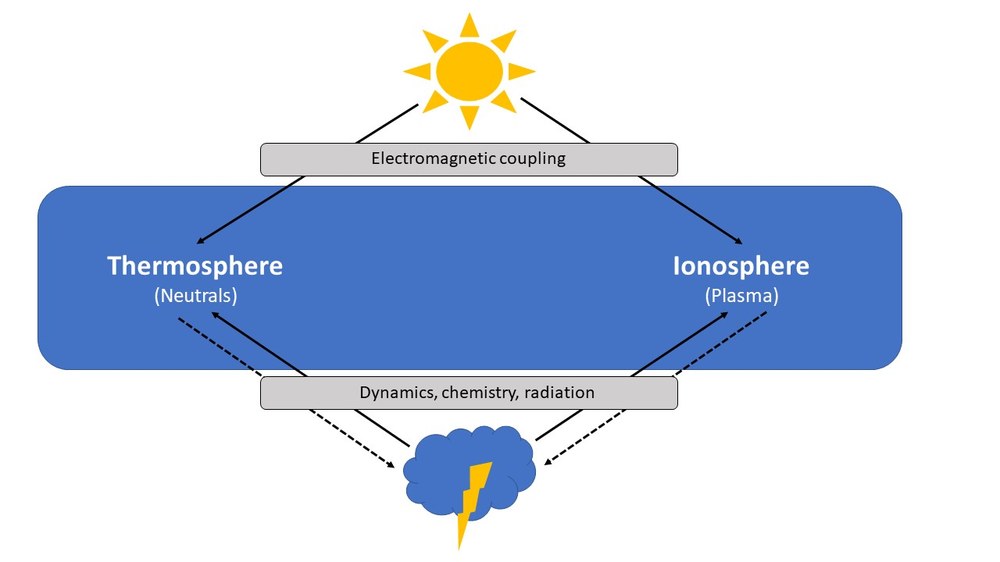Department for Solar-Terrestrial Coupling
The thermosphere-ionosphere dynamics have a large complexity. The processes are driven to a large extend by external forces, primarily from the Sun. Also dynamical and chemical coupling with the atmosphere below plays a crucial role for the state of the thermosphere-ionosphere system (TI-system). The objective of this department is to improve the understanding of the various electrodynamic processes that drive the thermosphere-ionosphere variability with the ultimate goal to develop forecasts of the thermosphere-ionosphere based on a physical understanding of space weather.
Our research is based on observations and numerical modelling.
External forcing of the thermosphere and ionosphere
This working group analyzes, characterizes, quantifies and models the solar-driven processes in the TI system, which cause most of the TI variations, to improve the quality of forecasts of the spatial and temporal occurrence of disturbances in the TI system, especially during storm conditions.
Modelling and investigation of ionospheric processes
The working group investigates energy transfer processes between the terrestrial atmosphere and the thermosphere-ionosphere system and develops methods to improve physical modeling as a contribution to the advancement of TI prediction.
Instabilities and irregularities in the thermosphere and ionosphere
This working group analyzes and characterizes instabilities and irregularities with smaller temporal-spatial scales in the TI system that cannot be resolved with the large-scale models and often affect the propagation of radio waves in the ionosphere. This information about their characteristic properties can then be integrated into corresponding models.

